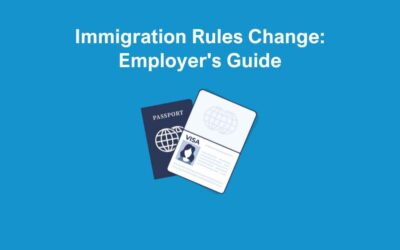World Health Day is observed on April 7th and is created and ran by the World Health Organisation (WHO). It seeks to raise awareness about worldwide health issues, whilst promoting healthy living and encouraging it. Every year, World Health Day has a new theme, specific for that year, and one which is a priority area of concern.
It is easy to associate a sedentary lifestyle with office work, and it has now become a significant concern for the general health of the working population. Desk jobs are on the rise, associated with the rise of technology driven workplaces, the majority of work environments will be office based now. There are a number of health issues associated with long periods of sitting down, including obesity, heart disease and diabetes.
There are numerous challenges associated with office jobs, therefore it is vital to prioritise fitness and wellbeing. Regular physical activity not only helps to prevent health problems but can also increase mood, energy levels and productivity – the benefits are clear to see. You can make small tweaks to your daily routine, incorporating movement into the workday. We’re not suggesting you run a 10K in the office (unless you really want to!), but regular movement will go a long way to combating the negative fitness aspects associated with an office job.
Understanding the Challenges of Office Work
Sedentary behaviour is activity that involve little to no physical movement, such as sitting or lying down for long periods of time, with engaging your muscles. In the modern day working world, sedentary lifestyles are increasingly common, particularly with those in an office job.
Let’s take a look at some of the associated health risks:
Obesity can be caused by a lack of physical activity, something which is commonplace with those working in an office job. Excess body weight is associated with a range of health issues, including heart disease, diabetes, and certain forms of cancer.
Prolonged sitting has a direct link to cardiovascular problems, such as high blood pressure and heart disease. Reduced blood flow can contribute to this over time.
Mental Health Issues can be directly linked to a lack of physical movement. Exercise is well known to positively affect mental health. Therefore, a lack of exercise can often build up negative feelings.
It can be challenging to maintain a consistent fitness schedule whilst in an office job. One of the main challenges is time constraints. Office workers can often work busy and long hours, leaving minimal time for physical activity. It is key that they find the right balance between professional work and physical activity. One thing that we do at The HR Booth, if Walk & Talk’s at lunchtime.
There may be limited access to facilities in the workplace. Very few offices will have direct access to gym facilities. Office workers may struggle to find a gym that they can access on their break times.
Office workers may suffer from a lack of motivation to do physical work. Often, they may be in stressful jobs, suffering from fatigue and competing priorities. Therefore, the last thing they would want to do is to go and exercise. But trust us, it will definitely help!
How to Incorporate Movement into your Workday
It’s important to try and combat the negative effects associated with prolonged sitting and a general lack of physical activity.
We recommend regular movement breaks, taking time to stand up, walk about and stretch. It can be tough sitting at a computer all day, 5 days a week. Taking regular intervals can increase productivity.
Encourage walking or cycling to work, especially for those who are local to the office. Now that we are coming into the Summer months, the weather’s improving, why not take a walk to work. It may take longer but you’ll feel the benefits throughout the day. Some of our staff at The HR Booth will meet up for a walk before work, go get a coffee, then walk back to the office.
Another activity that we do at The HR Booth, is Walk & Talk’s at lunchtime. We take 30 minutes away from our desks to go and take a walk outside (weather permitting!). It’s a great way to fit exercise into the working day, as well as providing an opportunity for the team to bond together away from their desks.
Making Healthy Choices in the Office Environment
We encourage healthy eating habits in our office. Meal prep can be key here, as employees will prepare lunches for the week ahead, and therefore avoid relying on convenient but often unhealthy options for lunch.
Offer smart snack choices such as fresh fruit, so that employees are more likely to eat healthy whilst in the office. That being said, it is important to find a nice balance here, so chocolate and cake every so often is also good, it can boost morale in the office and doesn’t make your employees feel like healthy eating robots.
Being hydrated is essential to being productive, especially during this warmer weather. Encourage employees to keep a water bottle at their desk at all times, or even provide options like water fountain. Keep the fridge stocked with water, as if, an employer, you’re seen providing this then this can boost morale in the office, making employees feel valued.
Education and training on this can inform employees of more healthy workplace habits. It also provides an opportunity for employees to voice their opinion on the matter, and if they have any suggestions on healthy workplace habits. It’s important that employees feel heard and valued throughout this process.
Have wellness policies in place, such as Walk & Talk, to encourage employees to stay active and healthy. One method that we have found works quite well is ‘Fast Food Friday’. One Friday every month, the team will all have a fast food lunch together. Now you might be thinking that we’re contradicting ourselves but hear us out first. By having a dedicated lunch time for fast food, unhealthy eating, we’ve found it encourages employees to eat healthy out with this Friday, knowing that they can eat guilt free. It’s also a nice way to finish off this week, bonding together as a team.
Prioritise Mental Health
It is vital that you always prioritise the importance of your employees’ mental health.
Physical activity will trigger the release of endorphins, acting as a natural mood lifter and pain reliever. This can reduce the feeling of stress, anxiety and depression whilst also promoting a sense of happiness.
Regular exercise is proven to improve sleep quality. Better sleep means you’ll be more rested when it comes to work, and therefore you are more likely to perform better at work. Adequate sleep supports cognitive function, emotional regulation, and a better overall wellbeing.
By achieving fitness related targets, you will boost your self – confidence and self – esteem. Regular exercise can lead to a positive body image and a feeling of self – worth. All of which contributes towards an improved mental health wellbeing.
Provide a healthy work – life balance between work and personal life. Prioritise self – care activities and take regular breaks where possible. Flexible working arrangements can support employees in managing their workload and personal responsibilities.
By investing in the wellbeing of your employees, you are demonstrating commitment to their health and wellbeing, but also contributing towards a positive workplace environment, a place where anyone can thrive.
World Health Day is a reminder of how important it is to put health and wellbeing first, especially when facing modern day challenges associated with office life. The sedentary nature of office work has become more of a relevant concern for employers, especially given the rise of technology driven equipment in the workplace. Conditions like heart disease and diabetes are just a few of the risks attached to prolonged sitting (something which is commonplace in the office).
It is, therefore, important to face these challenges head on, and prioritise health and wellbeing amongst your workforce. Incorporating regular physical activity and movement into your workday, either through regular breaks or active commuting, is vital to overcoming the negative effects of sedentary behaviour.
It’s also important that you understand the associated health risks. Such as cardiovascular problems and mental health issues can often come from a lack of physical movement, thus emphasising the need for a more active approach to life in the office.
As an employer, you have a responsibility to lead by example, and implement effective strategies into the workplace. A healthy work – life balance, relevant training and education for your staff, healthy meal prep and snack options and lots (and lots) of hydration will all lead towards a positive and healthy culture in the workplace.
Incorporating healthy eating habits into the workplace can further enhance employee wellbeing and mental health. If you can prioritise physical and mental health in the workplace, employers can create a positive environment where employees thrive and contribute towards greater productivity, increased job satisfaction, higher staff retention rates and an all – round happier workplace.







